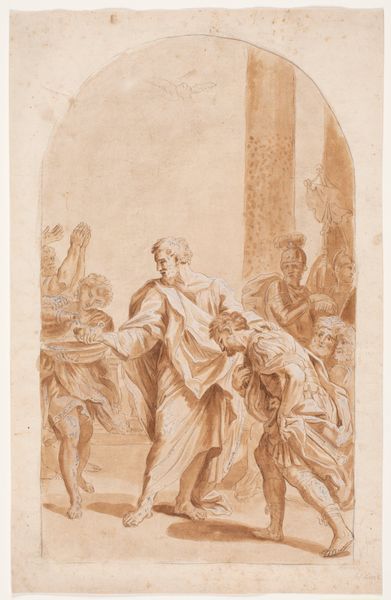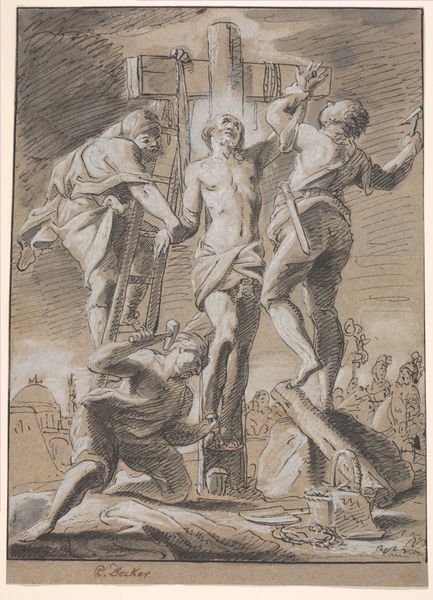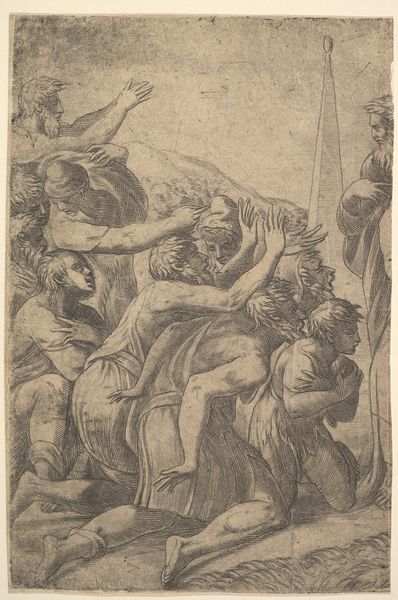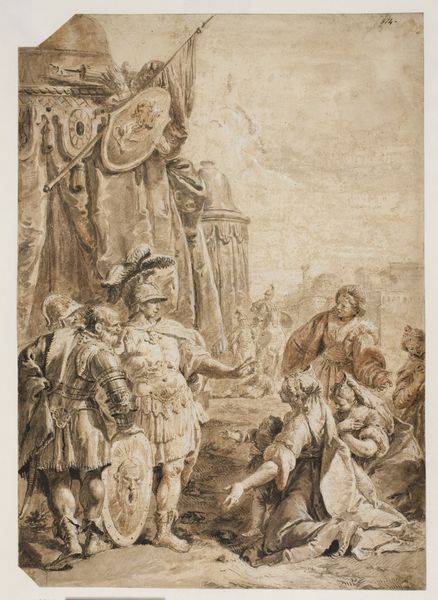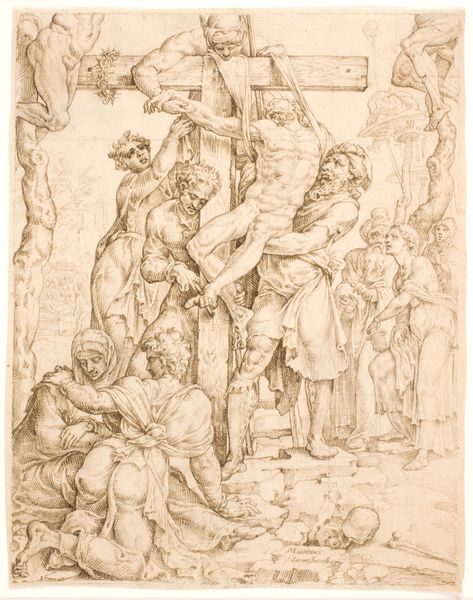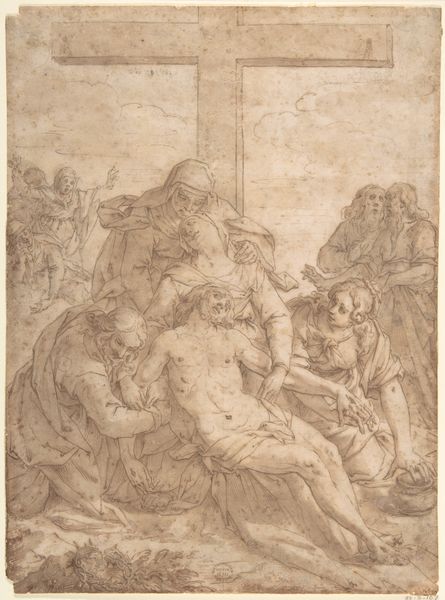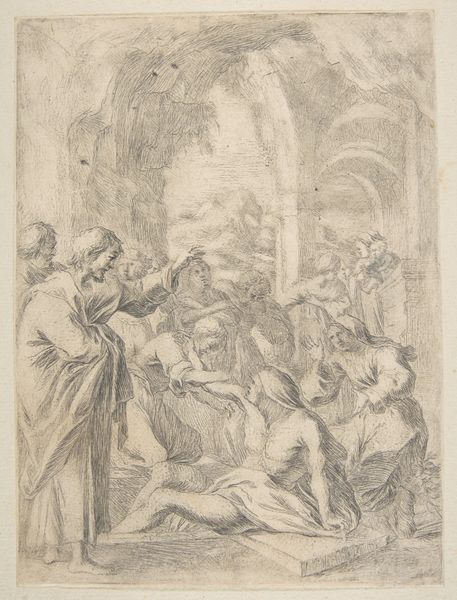
drawing, print, fresco, pencil, charcoal
#
drawing
#
medieval
# print
#
charcoal drawing
#
figuration
#
fresco
#
11_renaissance
#
cross
#
pencil drawing
#
pencil
#
charcoal
#
history-painting
#
italian-renaissance
#
christ
Dimensions: 11-1/4 x 8-1/4 in. (28.6 x 21 cm)
Copyright: Public Domain
Curator: This haunting image is known as "Descent From the Cross," created sometime between 1500 and 1600 by an anonymous artist. Currently, it resides here at the Metropolitan Museum of Art. Editor: The immediate impact is somber. A cluster of figures rendered in somber greys conveys profound grief, though the artist's deft handling of chiaroscuro does lend a dramatic intensity. Curator: Indeed. Its existence as a drawing—likely executed in charcoal or pencil—suggests this could be a preparatory study, perhaps for a larger altarpiece or fresco, showcasing the influence of the Italian Renaissance on depictions of the Passion. Editor: I’m struck by the spatial dynamics. The composition is heavily weighted towards the upper center, with the body of Christ forming a visual fulcrum. The figures both support and seem burdened by the weight, creating a palpable sense of human suffering. Curator: Right. The ladder and cross themselves form strong vertical elements that dominate the composition, visually reinforcing Christ’s divine stature and tragic fate while contextualizing this sacred performance in terms of spatial arrangements and scenography. How the image’s function likely promoted specific types of visual consumption in Renaissance social practice is worthy of consideration. Editor: Note, also, the varied emotional states communicated. Some figures openly grieve with outstretched arms and tearful faces; others seem lost in silent contemplation, heads bowed. The semiotician in me sees in these gestures and postures a carefully constructed grammar of mourning. Curator: The historical resonance, of course, would be tremendous. The image’s subject matter is itself imbued with complex symbolic power relating to ideas about sacrifice, redemption, salvation, etc. As it would have functioned within the religious sphere, we must analyze both the material work itself, as well as the power systems in place that produced, and made possible, certain images. Editor: Absolutely. Dissecting the artist's choices, from line weight to figure placement, gives us a grammar, a deeper understanding of the artistic vision, despite the anonymity of the creator. This meticulous study reveals a deep knowledge of form and human emotion. Curator: Precisely. And hopefully, now our listeners have developed an additional lens through which to look at Renaissance drawings more broadly. Editor: A fresh vantage for considering how artistic technique and emotion combine powerfully within "Descent From the Cross."
Comments
No comments
Be the first to comment and join the conversation on the ultimate creative platform.

